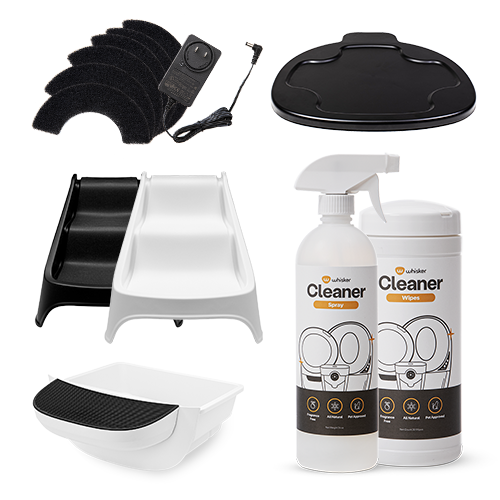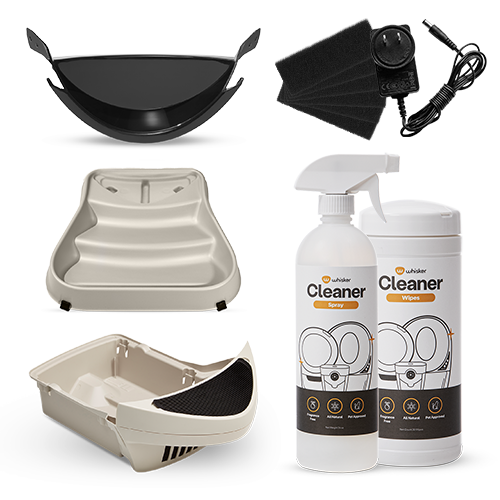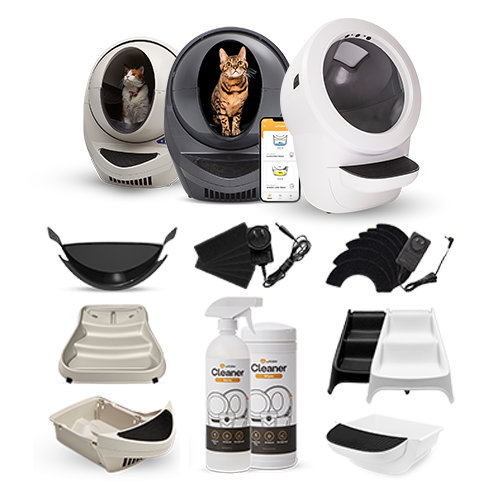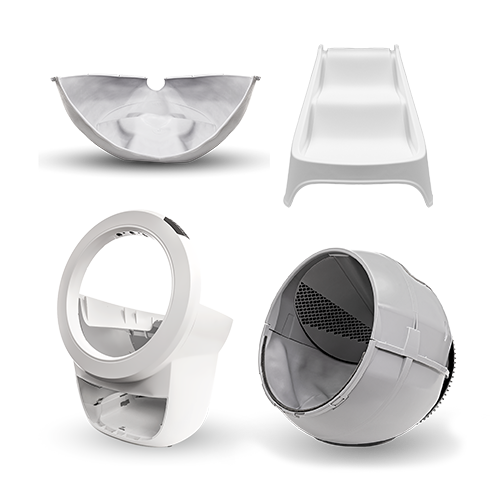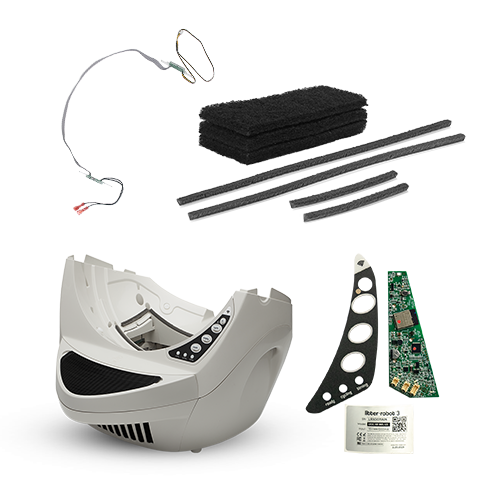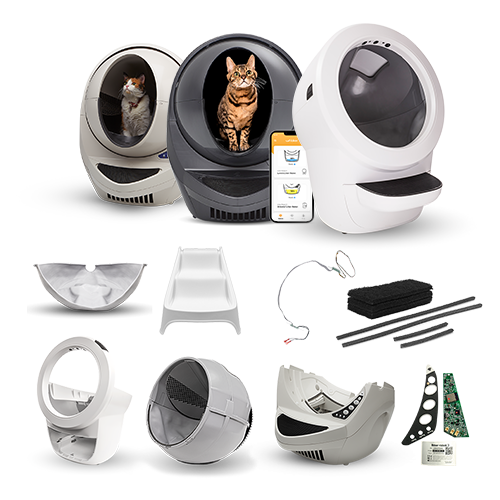Now you have the best automatic litter box available, it’s worth getting to know how it functions to ensure it keeps working well for you, for as long as possible. Don’t worry, it’s generally very simple by design.
PARTS
BONNET:
The elastic band that goes over the top, and clips down into the base. the bonnet forms part of the electric circuit that powers the litter-robot and needs to be in place to complete the circuit. the 2 little ‘ears’ on the back corners need to be slipped into place, then the bonnet can be leaned forward and the longer front clips engaged. they are quite soft, and just lightly click in, so do check by putting your fingers in the holes left and right above the clips, and trying to lift. if it is secure, the whole robot will want to lift, not just the bonnet.
GLOBE:
Essentially the litter tray, where the litter is filled into, using the pre-marked line as the DO NOT OVERFILL mark. Generally, the top-up is to just under the line (I stop at about 1 cm below). The globe is the part that gets messiest, depending on your cat’s habits, litter and climate. It’s easy to remove and hose out when needed. As the liner is heavy-duty rubber, it will absorb odours, so its best to use suitable litter with carbon or activated charcoal, to help to keep the liner odour free. Scented litters (lavender for example) and no odour control, can result in a scented liner, which may not be pleasing to you or your cat. At the rear outside of the globe, the black key needs to have the narrow foot in a pocket on the base, as it provides a little support at the dump position of cycling when the clean litter is in the pocket and putting weight against the track. There is a small beige button on the inside of the globe. If you need to clean the channel, you can simply unscrew from the centre of the black key, and remove for cleaning. Note the parts slot together when reassembling.
BASE:
This is the powerhouse, with the motor and control panel, circuit boards and wiring inside. It’s important not to get the base or bonnet wet, so damp cloth only when cleaning. The base gets dirty over time from escaped litter, between the globe and base, and also from over full waster drawers. Some basic cleaning (see deep cleaning) is needed from time to time, depending on your cat’s habits, a number of cats, litter used, and climate. High heat and humidity generally mean more deep cleaning is required as well. Check out here for cleaning video. The control panel on the front has coloured lights to indicate operations for the Litter-Robot. Basically, solid lights are good, and all are operating normally. Flashing lights are indicating there is an issue of some sort, that needs to be attended to. If you are not sure, refer to the Quick Reference Guide that came with your Robot, or email sales@catevolution.co.nz and ask. Like all appliances, it’s best to check the guide before pushing too many buttons. WASTE TRAY This is the drawer that pulls out has a liner inserted and collects the soiled litter when the Litter-Robot cycles and dumps the waste. Its fully washable, and needs to be changed (old liner out, new liner in) when the blue light flashes on the control panel. Don’t leave it too long, as overfull trays mean more cleaning, and possible soiled material spreading about in the base and onto the globe and sensors.
EASY CARE TIPS
- Always completely unplug the Litter-Robot if you turn off the power button on the control panel, as this refreshes the software for you.
- Change the waste drawer liner as soon as the blue light starts flashing (don’t keep pressing RESET)
- When you change the liner, top up the litter. With a solid blue light press RESET once to calibrate the cat sensor to the new weight. Don’t top up litter without emptying the drawer.
- Do a deep clean from time to time, even if you are keeping the globe clean, as there may be escaped litter under the globe or dirt from the chute on the sensors.
- A good quality litter with carbon or activated charcoal will help with odour control and keep your Litter-Robot cleaner by clumping well and filling your waste drawer less. This is especially noticeable in warmer climate conditions.
